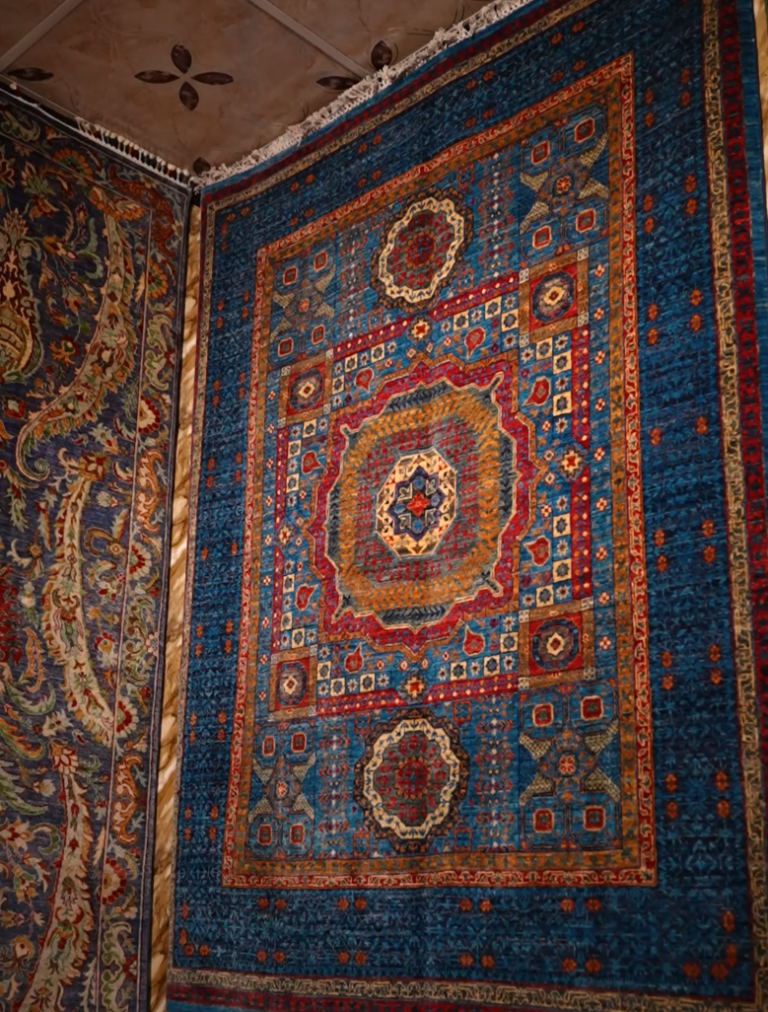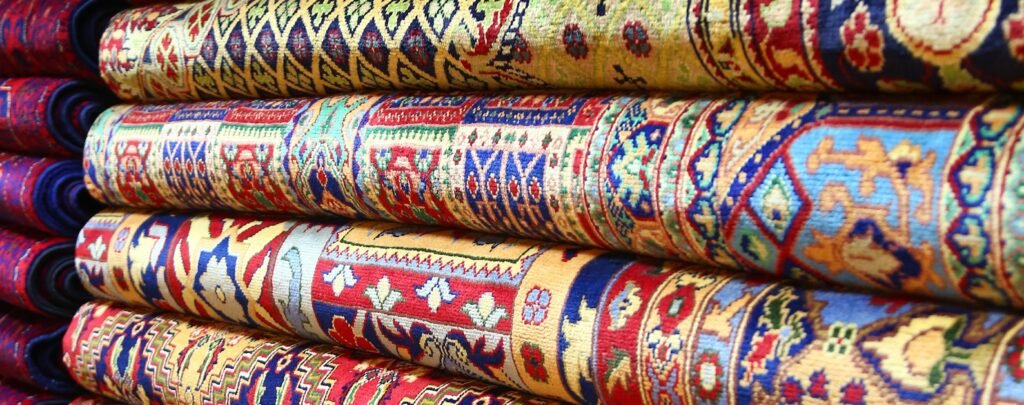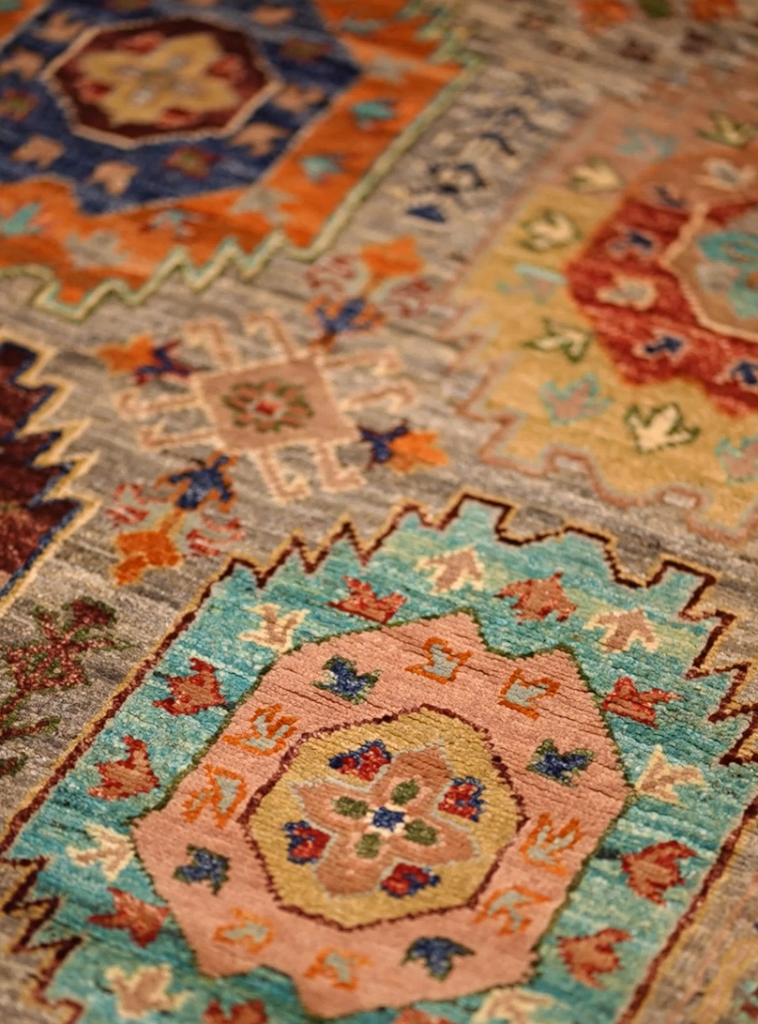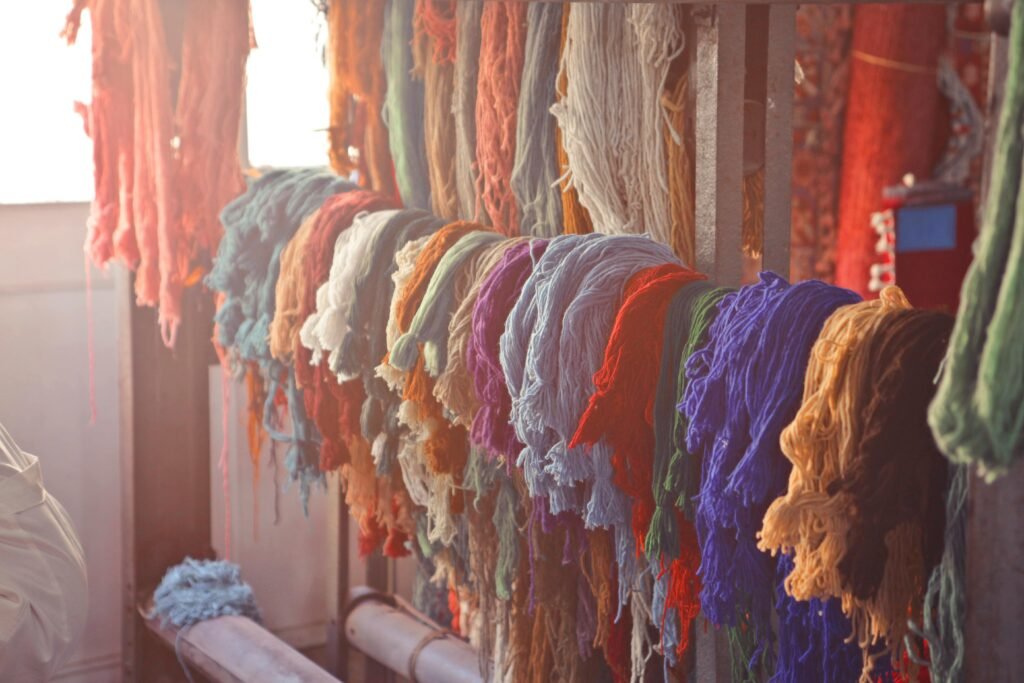Silk & Taar
Afghanistan Rugs vs. Persian Rugs Understanding the Differences
When shopping for a high-quality, handcrafted Afghanistan rug, you may come across Persian rugs and wonder how they compare. While both are exquisite examples of traditional rug weaving, Afghanistan rugs have distinct characteristics that set them apart. Understanding the differences in weaving techniques, design patterns, materials, and cultural influences will help you make an informed decision when selecting a rug for your home or collection.

Origin and Cultural Significance Of
Afghanistan Rugs
Afghanistan and Persia (modern-day Iran) both have rich histories of rug weaving, each shaped by unique influences. Various ethnic groups, including the Turkmen, Baluch, and Hazara, weave Afghanistan rugs, incorporating strong tribal and nomadic elements.
These rugs reflect Afghan heritage and often display traditional motifs passed down for generations.
In contrast, Persian rugs originate from established workshops and weaving centers. Their designs take inspiration from Persian art, poetry, and history (Love Your Rug, 2024).
Weaving Techniques and Knot Type
A key technical difference between an Afghanistan rug and a Persian rug is the knotting style. Afghan weavers use the Turkish (Ghiordes) knot, which creates a thick, durable texture. This technique makes Afghanistan rugs highly resilient and long-lasting.
On the other hand, Persian rugs typically feature the Persian (Senneh) knot. This style produces intricate and refined designs. Afghan weavers rely on traditional hand-knotting methods, ensuring that each Afghanistan rug is a one-of-a-kind masterpiece (Carpet-Wiki, 2024).

Design and Patterns
Bold geometric patterns, deep red tones, and symmetrical designs define an Afghanistan rug. Popular motifs include the Gul medallion, repeating diamonds, and tribal symbols that reflect Afghan traditions. These patterns often draw inspiration from nomadic lifestyles, carrying deep symbolic meaning.
By contrast, Persian rugs showcase floral and curvilinear designs. They feature delicate vines, arabesques, and central medallions influenced by Persian gardens and architecture (Style by Emily Henderson, 2024).

Materials and Durability: The Strength Of Afghanistan Rugs
Both Afghan and Persian rugs use high-quality wool, but Afghanistan rugs stand out due to their locally sourced Ghazni wool. This wool is hand-spun, giving the rugs a slightly uneven yet natural texture. Additionally, Afghan weavers dye the wool using plant-based dyes, creating deep, warm hues that age beautifully over time.
Persian rugs, in contrast, may include silk or a wool-and-silk blend. This combination results in a more delicate texture with a luxurious sheen (Carpet-Wiki, 2024).

Affordability and Accessibility: Why Choose Afghanistan Rugs?
One major advantage of Afghanistan rugs is their affordability. Despite their high-quality craftsmanship, they often cost less than Persian rugs. Many Afghan rugs come from small village workshops or home-based weaving settings. In contrast, Persian rugs are frequently produced in large, commercialized weaving centres.
For buyers seeking an authentic, handmade piece at a reasonable price, an Afghanistan rug is an excellent investment (Love Your Rug, 2024).
Authenticity and Handmade Craftsmanship
Every Afghanistan rug reflects Afghan culture, telling a story of resilience and tradition. Unlike mass-produced rugs, artisans craft each piece entirely by hand. As a result, no two Afghanistan rugs are exactly alike.
Weaving these rugs takes time, often months or even years, depending on the complexity of the design. This level of craftsmanship makes them highly valuable and sought after by collectors worldwide (Carpet-Wiki, 2024).
Which One Should You Choose?
Both Afghan and Persian rugs showcase exceptional craftsmanship, but your choice depends on your style preference. If you love tribal patterns, bold colours, and durability, an Afghanistan rug is ideal. A Persian rug may suit you better if you prefer delicate floral motifs and a refined look.
Regardless of your decision, purchasing a handmade Afghanistan rug supports traditional artisans and preserves a centuries-old craft. Read more here on how you can support to keep the craft alive.
Looking for an Authentic Afghanistan Rug?
Explore our collection of handcrafted Afghanistan rugs made by skilled artisans using traditional techniques. Each piece is a timeless masterpiece, ready to bring warmth and culture into your home.
You can contact us via social media, email or whatsapp
info@silkandtaar.com
+44 (0)7508 764428
LOCATION
London, United Kingdom
If you have any queries, you can use the form above to get in touch with us. Make sure to leave your email address and we will get in touch with you.
You can also chat live with one of our team members by clicking on the whatsapp icon at the bottom right of the page
Alternatively, you can visit our social media pages and send us message. Make sure to follow us and see all the new arrivals and rugs on sale
